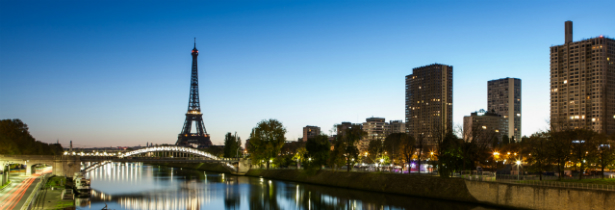Berlin – The Brothers Grimm
The fathers of the Fairy Tale were not Berlin residents at first, but after years of work as linguists, academics and cultural researchers, the siblings were given tenure at the Berlin University. Of course, they’d already established their name years before, having made stories like Cinderella, Hansel and Gretel, and The Frog Prince famous the world over.
This time, their work would be turning towards less magical subjects, as from 1940 onward, they focused on creating a definitive German dictionary, and even went on to publish a massive, ambitious tome, The History of German Language.
They’ll always be known for glass slippers and gingerbread houses of course, but these pioneering linguists were championing their research until they both passed away in the 1860’s. Today, the two brothers’ graves rest next to each other in the St. Matthaus Kirchhof Cemetery, together in the afterlife as they were in their work.
Paris – Claude Monet
Before he became the definitive impressionist painter, Claude Monet rose to prominence in the art world on the merit of his Paris paintings. Having lived there all his life, even being schooled beneath the shadow of the Notre Dame Cathedral, Monet was utterly obsessed with the city which had been his childhood playground.
Others would go the Louvre and copy the old masters colour for colour, but Monet set out to develop his own style in his twenties, and so, a legend of the art world was born. For many years, his house at Giverny was where he would spend a large amount of time in solitude, often painting the surrounding gardens and lily ponds. They became utterly iconic parts of his collection, and to this day, the house and its lush gardens belong to the French Academy of Fine Arts, and have become one of the most popular attractions in Paris.
Amsterdam – Rembrandt
Another European city, another Painter. Rembrandt, like Monet, owed a particular allegiance to a certain city from the earliest points of his professional career. It was Amsterdam, the rapidly expanding business capital of the Netherlands, where he found himself in 1631, and it was then that began to work as professional portrait artist for the very first time. Rather than constricting himself to painting austere portraits of Dutch noblemen, however, he would branch his work out into drawing, etchings and watercolours, with astounding results.
There is dispute amongst critics about the amount of works which can be attributed to Rembrandt, but the estimate is that he created nearly 600 paintings, 400 etchings, and 2,000 drawings in his lifetime. To this day, the largest collection of his work resides in the Rembrandt House Museum in the very centre of Amsterdam. Not only did he create his best work in the city, but he taught and inspired hundreds of Amsterdam’s citizens.
Vienna – Sigmund Freud
The father of psychoanalysis and worrier of the over analytic everywhere began his career at the University of Vienna, where his research led him to looking into cerebral palsy and microscopic neuroanatomy. From these not so humble beginnings, he went to even further heights, creating his own brand of psychoanalysis focusing on analysis of his subject’s dreams/ No matter your feelings on how relevant his work is today, (He did after all, say that a cigar is just a cigar), it changed the world of psychology forever.
A proud resident of Vienna, he spent most of his life there, moving his research his papers from apartment to apartment each year, but never straying from the city. With a large community of fellow psychologists including Carl Jung working around him, he stayed in Vienna throughout most of his life, devoting it to his work.
St Petersburg – Vladimir Lenin
No matter what your political ideology might be, there’s no denying that Lenin is one of the defining figures in Russian history. Lenin began his love affair with St. Petersburg working as a lawyer’s assistant in the centre of the city. For years and years, he developed his links with social democratic party, before he became a more senior figure, and everything in Russia changed. As a leader of a communist revolution, Lenin became an indomitable figure within Russian politics, and after 1917, the way of life he had lived when he first came to St. Petersburg had all but disappeared. St Petersburg is already a bastion for amazing historical sites, and Lenin’s political beginnings having their home only make it more so.







